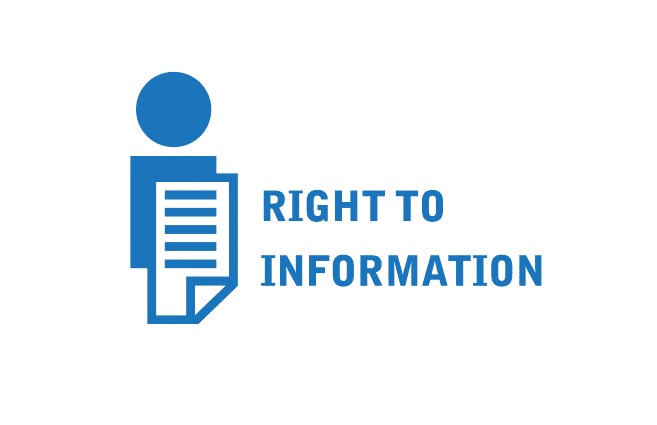Right to Information Act 2005 mandates timely response to citizen requests for government information. Right to Information is an act of the Parliament of India to provide for setting out the practical regime of the right to information for citizens and replaces the erstwhile Freedom of information Act, 2002.
It is an initiative taken by Department of Personnel and Training, Ministry of Personnel, Public Grievances and Pensions to provide an RTI Portal Gateway to the citizens for quick search of information on the details of first Appellate Authorities, PIOs etc.
The direct link for RTI software is here
Steps to file an RTI:
- To file an RTI application click on submit request option.
- After clicking on submit request option ‘Guidelines for use of RTI ONLINE PORTAL‘ screen will be displayed. This screen contains various guidelines for using RTI online portal.
- Citizen has to click on the checkbox ‘I have read and understood the above guidelines‘ and then click on the submit button.
- Then Online RTI Request Form screen will be displayed. Ministry or Department for which the applicant wants to file an RTI can be selected from Select Ministry/Department/Apex body dropdown.
- The applicant will receive message alerts in case he/she provides a mobile number. The fields marked * are mandatory while the others are optional.
- If a citizen belongs to BPL category, he has to select the option ‘Yes‘ in ‘Is the applicant below poverty line?‘ field and has to upload a BPL card certificate in supporting document field.
- If a citizen belongs to Non-BPL category, he has to select the option ‘No‘ in ‘Is the applicant below poverty line?‘ field and has to make a payment of Rs 10 as prescribed in the RTI Rules, 2012.
- On submission of the application, a unique registration number would be issued, which may be referred by the applicant for any references in future.
- ‘Text for RTI request application‘ should be up to 3000 characters. If the text is more than 3000 characters, then the application can be uploaded in supporting document field.
- After filling all the details in the form, click on the ‘make payment‘ option.
- Then, Online Request Payment form will be displayed. The payment mode can be selected in this form, which can be; internet banking, ATM-cum-debit card or credit card.
- After clicking on the ‘Pay‘ button, the applicant will be directed to SBI payment gateway for payment. After completing the payment process, the applicant will be redirected back to RTI Online Portal.
Note:
- Only alphabets (A-Z, a-z), numbers (0-9) and special characters (, . – _ ( ) / @ : & \ %) are allowed in text for RTI request application.
- No RTI fee is required to be paid by any citizen who is below poverty line as per RTI Rules, 2012.
- The applicant will get an email and message alert on submission of application.
- The application filed through this web portal would reach electronically to the nodal officer of concerned Ministry/Department, who would transmit the RTI application electronically to the concerned CPIO.
What to do if your RTI request is rejected?
- There is a fundamental difference between RTI Request and RTI Appeal.
- RTI Request is filing an application for the first time. A request is made by the citizen to one person (i.e. PIO) to provide information. This means that it involves only the citizen and PIO.
- RTI Appeal is an appeal before senior officer against the decision of PIO. This means that here, a third person (i.e. Appellate Authority) comes between the citizen and the PIO.
- The appeal is only filed when the citizen is not satisfied with the reply of PIO or PIO rejects citizen’s request for information. This means RTI request is application process while RTI appeal is appellate procedure against the decision on RTI application.
Steps for filing RTI First Appeal:
- For submitting First Appeal application, click on ‘submit first appeal‘ option.
- Upon clicking, ‘guidelines for use of RTI online portal‘ screen will be displayed. This screen contains various guidelines for using RTI online portal.
- Citizen has to click on the checkbox ‘I have read and understood the above guidelines‘ and then click on the submit button.
- Online RTI first appeal form screen will be displayed on which applicant has to enter registration number, email ID and security code in the form.
- Upon clicking the submit button, an online RTI first appeal form will be displayed. The applicant can then select a reason for filing appeal application from ‘ground for appeal‘ dropdown field.
- Text for RTI first appeal application should be up to 3000 characters. If the text is more than 3000 characters, then the application can be uploaded in supporting document field.
- On submission of the application, a unique registration number would be issued, which may be referred by the applicant for any references in future.
Note: As per the RTI Act, no fee has to be paid for the first appeal.
The application filed through this web portal would reach electronically to the nodal officer of concerned Ministry/Department, who would transmit the RTI application electronically to the concerned appellate authority.


















